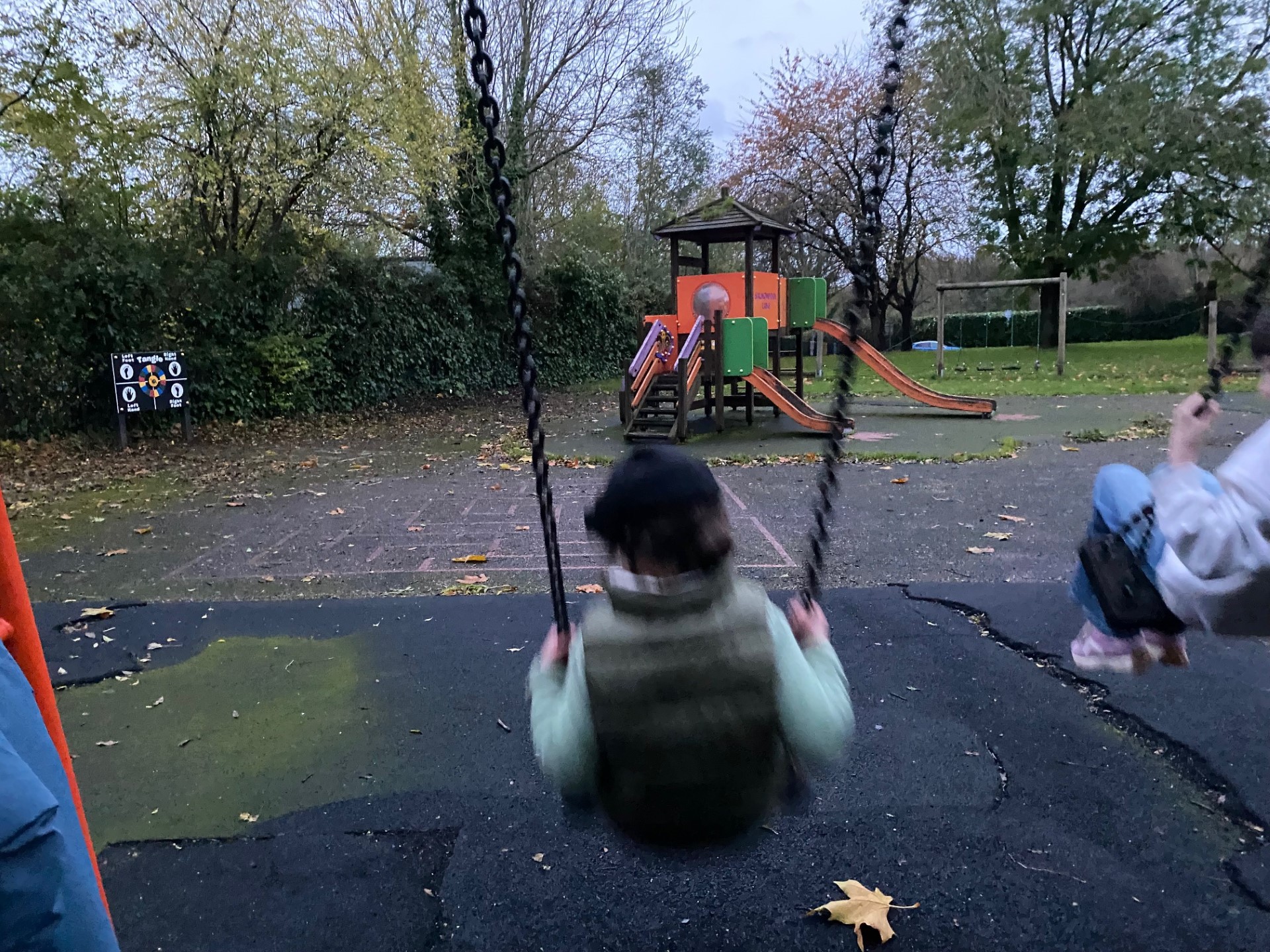For many years, Taz, my daughter, has loved swings at the park. Like many children with a learning disability, she enjoys the sensory feedback and the motion. She particularly loves the toddler swings with the little frame around her middle for security. She’s now nine and, despite some passionate attempts to propel herself into them, has outgrown the toddler swings (along with the toddler seat in supermarket trolleys, much to her indignance).
We have had to graduate to the basket swings that not all parks have. She enjoys these but not as much as the little swings. I had always assumed she would need these types of swings forever. Last week, she was watching her sister on the big swing (the typical swing that most children eventually learn to use). She walked over to the one next to her sister’s and tried to get on, we duly lifted her on and stood right behind her while she held the chains.
She wanted to be pushed.
We started to gently push while I welded my hand to her back to stop her falling out. She pushed me away. Before I could absorb the scale of the achievement, we were pushing her on the big swing; her, and her sister, looking absolutely delighted.
She held on tight and swung for at least ten minutes, we drank in the joy and took loads of photos. I never thought she’d be able to do that. I often forget that despite her learning disability and the huge setbacks and regression that seizures can cause, she can still learn and progress.
Her determination and spirit is fierce.
About a month ago Taz’s new enabler took her out. She returned home quite shaken up (the enabler). Due to a malfunction with her car, the car keys got locked in the car along with Taz at a supermarket petrol station. Thanks to some extremely quick thinking, she soon had keys being driven to her and someone on hand to safely smash a window in case fast access was needed to Taz (e.g. a seizure).
In the meantime, a member of supermarket staff who was among the team of people she’d recruited to assist, asked if there was any way they could encourage Taz to let herself out of the car seat, crawl across the back seat and open the door (there was a child lock on Taz’s side). If this had been me, I’d have said no way, my largely non-verbal girl simply does not have that level of understanding. But our enabler, as all the best support staff and educators do, has a far more open mind about Taz’s abilities and wanted to give it a go. She suggested a packet of Wotsits, Taz’s most coveted food (she’s rarely allowed them on the ketogenic diet she is on for her epilepsy).
A grab bag was produced and the coaxing began.
Cutting a long, and presumably very gripping scenario short, Taz wiggled out of her booster seat, made her way across the back of the car and calmly opened the door. My eyes popped when Taz’s enabler relayed this to me shortly after Taz strutted through the door with her giant bag of Wotsits. It gave me a lot to think about.
The obvious moral of this tale is to presume competency when it comes to learning disability. I’ve done a lot of thinking lately about what this means for us and I know I need to open my mind about what our little livewire can achieve. Who knew how powerful Wotsits could be?
